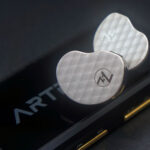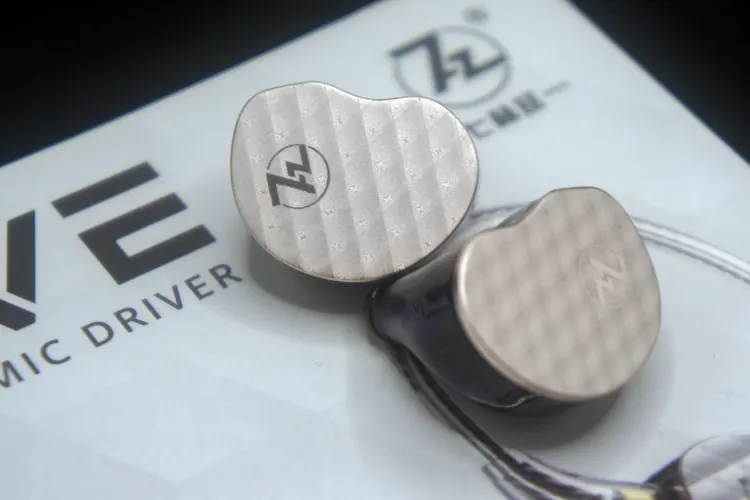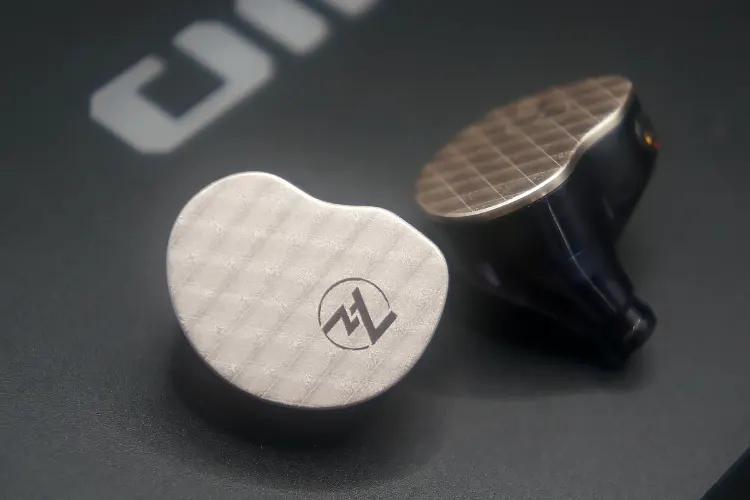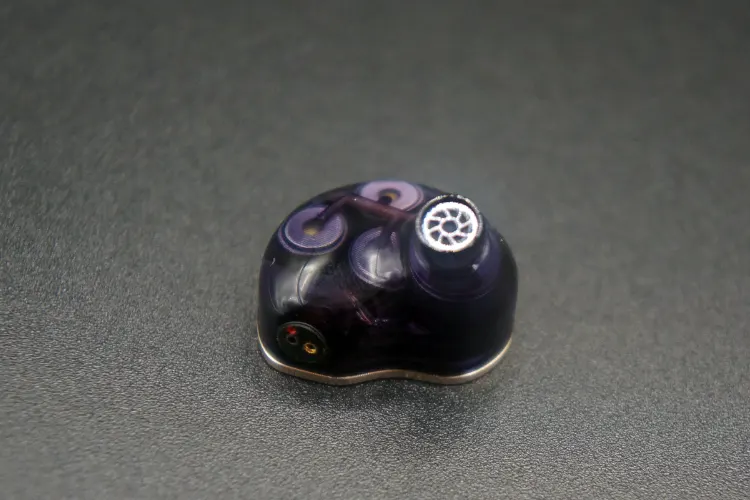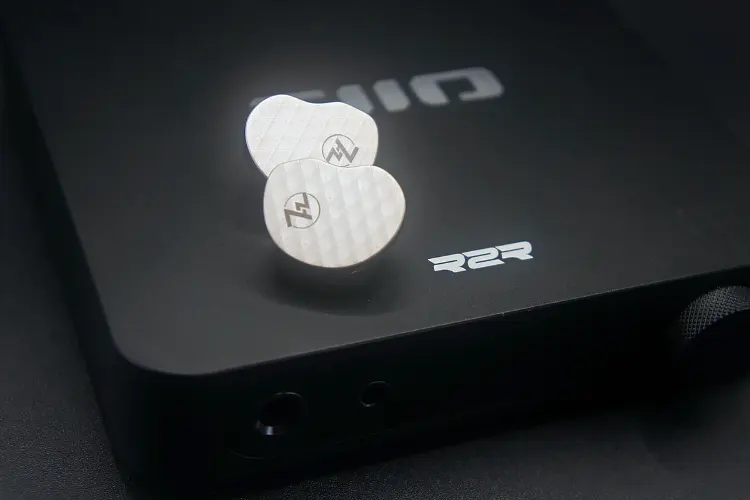In today’s feature, Meldrick reviews the 7Hz Five, an affordable yet unique universal IEM with 5 custom 6mm dynamic drivers per side. It is priced at $149.
Disclaimer: This sample was sent to me in return for my honest opinion. Headfonics is an independent website with no affiliate links or services. I thank the team at Linsoul for giving me this opportunity.
Click here to read more about 7Hz products we have previously reviewed on Headfonics.
This article follows our latest scoring guidelines which you can read in more detail here.
Aside from the Timeless planar IEMs the brand is known for, 7Hz has been steadily releasing a series of multi-driver IEMs with unique driver configurations.
For example, their latest IEM, the “Five,” the subject of our review today, has an industry-first five dynamic drivers in each ear.
At $149, the Five faces stiff competition from new entries within the sub-$200 price bracket, such as the planar Hidizs MP145 and LETSHUOER’s S08.
Read my full thoughts below to see if Five’s high dynamic driver count can shake up the IEM market.
Features
As alluded to by the IEM’s not-so-subtle naming scheme, the Five configuration has 5 different 6mm Dynamic Drivers in each ear, meshed via a custom electronic crossover system that 7Hz claims is constructed out of imported high-precision components.
To preserve the IEM’s clean presentation, each dynamic driver operates independently within an acoustic chamber, improving separation while maintaining a cohesive sound signature.
Being the first 5 dynamic driver IEM in the market, 7Hz equipped each driver with an array of N52 magnets and a metallic dome diaphragm to ensure strong transient response and resolving audio quality.
Design
The Five’s design is in line with most Chi-Fi IEMs, opting for a translucent resin shell and a separate metal faceplate. The resin body shows off the 5 dynamic drivers in each ear and the wires that connect them to one another.
A stylized “Five” logo can be seen around the outer edge of the shell, placed squarely in between the IEM’s three ventilation holes and L or R indicators.
The translucent resin used has a semi-glossy finish that can be prone to showing fingerprints, but its translucent nature makes it less visible compared to piano black resin used by their Chi-Fi competitors
The faceplate has a unique silver color with a hint of brown. This color scheme is further accentuated by the faceted rhomboid pattern on each faceplate.
While the stylized 7Hz logo is the most apparent feature of the faceplate, subtle star-shaped designs are scattered across the surface.
This gives the IEM a reflective “shimmering” appearance when light strikes it at just the right angle. Compared to most pure resin or flat metal IEMs in the market, I find that the Five’s design strikes a good balance between subtlety and well-executed visual flair.
Comfort & Isolation
Since the Five’s earpiece shells are tasked with containing 5 dynamic drivers per ear, the shells themselves are slightly larger than other IEMs within the price range.
They are not large enough to cause any substantial discomfort, but listeners with smaller ears may encounter minor fitment-related issues.
Despite its larger shell, the resin body integrates ergonomic curves and contours, ensuring that no part of the shell is pressing against my ear or causing any hot spots.
Even throughout mixed day-long desk and on-the-go usage, the IEMs never broke their seal or fell out of my ear, nor did they ever cause any discomfort even after multiple hours of straight use.
For a vented IEM design, Five’s isolate quite well. Without any music playing, they substantially lower the volume of background conversation noise, but they don’t do a good job of blocking lower frequency drowns from air conditioners.
With music playing, they fully block out all conversations and do a better job of isolating against most background noise. If sound isolation is a priority, the Five is sure to be sufficient.
Stock Cable
The included cable with the Five is a flat silver-plated oxygen-free cable, similar to the kind included in the 7Hz Artemis39 Bluetooth DAC/AMP.
Aesthetically, I found the cable to be quite good. It stood out compared to most other stock cables I’ve seen and adds to the overall aesthetics of the Five.
However, its usability is sub-par compared to most included cables. Its flat shape makes it more stable when resting on a desk, however, I found that it tangles much easier than typical round cables, while also taking more time and effort to untangle.
Lastly, I found that the stock cable exhibits some microphonics. It isn’t enough to be a total deal-breaker, but compared to most stock cables found in IEMs these days, the one included with the Five is sub-par.
Packaging & Accessories
The Five comes in a simple white box with a picture of the IEMs embossed in the front. The unboxing experience is not at the level of other brands like Moondrop and FiiO, but it does not detract from the overall value of the product.
The Five comes with a unique silicone carrying case, four pairs of replacement nozzle filters, and 6 pairs of silicone ear tips.
The carrying case was a standout. I’m usually accustomed to the cloth-covered hard cases that come with most IEMs. but I found that the flexible silicone case of the Five made it easier to stuff extra accessories such as a dongle or a Bluetooth DAC/AMP.
While I don’t believe that the silicone case would be as rigid and durable as a typical hard case, it has a use case for those who like to carry multiple accessories without adding too much bulk to their bags or pockets.
Sound Impressions
Bass
The 7Hz Five delivers an impressive sub-bass performance, with a tactile and textured low-end that’s both impactful and natural.
The sub-bass is more felt than heard, providing a visceral listening experience that is hard to replicate with non-dynamic driver IEMs. This bass tuning contributes to the overall V-shaped signature, with the sub-bass taking precedence over the mid-bass and treble.
While the sub-bass shines with its punch and slam, the mid-bass is less prominent, avoiding muddiness in the midrange.
Individual hits from kick drums can be felt throughout the mix with a chest-shaking authority, whereas bass lines from funk and disco music sound uncharacteristically thin void of much depth.
However, this subdued mid-bass means instruments in the lower midrange lack presence and separation, often sounding indistinct.
Bass drums exhibit good texture and bounce, but imaging within the bass and lower midrange can feel vague, with instruments seeming to blend into the background.
I find that I can precisely pinpoint kick drums and low percussive instruments within the soundscape, while synths and bass guitars feel like they’re being played from an arbitrary location.
The Five’s bass presentation prioritizes sub-bass impact, tactility, and overall depth. This gives it an engaging presentation that sacrifices warmth and a more balanced presentation of instruments within the bass region.
Mids
The midrange on the 7Hz Five takes a noticeable backseat in its V-shaped tuning, resulting in a recessed and somewhat hollow presentation.
While the absence of bass bleed helps maintain clarity, the mids lack the body and fullness that are crucial for delivering warmth and richness to instruments and vocals.
Deep male vocals, particularly in jazz tracks, sound thin and lack the velvety smoothness associated with more neutral or mid-forward tunings.
Instrumental layering and separation in the midrange are also compromised. Guitars, pianos, and other midrange-focused instruments often feel muted or scooped out, making them less engaging and impactful, often isolating tracks into three dominant elements: bass, vocals, and hi-hats.
This is particularly evident in balladic pop or acoustic tracks with minimal instrumentation, where the mids feel stripped down and lack emotional resonance.
Additionally, subtle vocal textures and harmonics are lost, which diminishes the overall sense of depth and detail in vocal-centric recordings.
Aside from vocals and the occasional high-frequency guitar strum, instruments in the midrange feel muted and dull.
The V-shaped sound signature of the Five does not synergize well with mid-centric genres, however, it fares better with music that relies heavily on deep bass notes and energetic chimes and cymbals.
Treble
The treble on the 7Hz Five delivers a balanced performance that avoids sibilance, making it pleasant for extended listening sessions. High-frequency elements, such as hi-hats and cymbals, are detailed and resolving, offering a crisp and airy texture.
String instruments and higher harmonics exhibit good fidelity, adding a touch of sparkle to the overall presentation. However, these elements lack the same prominence as the sub-bass, creating a slight imbalance that can make the treble feel subdued in comparison.
While hi-hats and cymbals come across as crisp and defined, snares curiously lack the same level of impact and texture, making them feel less lifelike. This results in a treble presentation that, while clean and detailed, occasionally struggles to match the dynamism of the bass.
The treble of the Five is energetic without coming off as overly harsh. Its tuning ensures that it complements the overall V-shaped signature, though it does not elevate the Five to a truly balanced or analytical sound.
Imaging
The Five’s imaging performance was sub-par, particularly within the mid-bass and midrange. While sub-bass kick drums, vocals, and cymbals exhibited good directionality, I struggled to locate different bass guitars, synths, and keys in layered mixes.
Layers of strings and horns felt compressed, with instruments overlapping one another, making it challenging to position them distinctly within a space.
The Five’s soundstage is decent at best. I never found myself overtly impressed by the width or depth of the sound stage, but it is wide enough to place different instruments without making the mix feel too claustrophobic or crowded.
Click on page 2 below for my recommended pairings and selected comparisons.


